Installation of a circulation pump: types, purpose and features of its installation
Ideally, the heating system should guarantee uniform heating of the room. However, it happens that, for example, in the kitchen the batteries are almost cold, in the living room - a real sauna.
At the same time, the fuel boiler runs to the limit. Fortunately, the installation of a circulation pump has a positive effect on the efficiency of the fuel system.
Next, we will talk about the intricacies of the choice of pumps, we will understand their varieties and design features, and also highlight the advantages and disadvantages of the equipment.
The content of the article:
When is a circulation pump needed?
When problems arise with an even distribution of heat in the house, then one of two options is used to solve them: replacing pipes or installing additional equipment. Balance the heat distribution allows new pipes of larger diameter than the previous ones.
This option is effective and practical. However, replacing pipes is not only long, but also expensive.
The second solution is to add a circulation pump to the heating system. It allows you to balance the temperature in the rooms throughout the building. It also prevents the formation of air bubbles that inhibit the flow of water. And the cost of the circulation pump is several times lower than the payment for pipes, their delivery and installation.
Also, the device is easy to install. Therefore, owners of private homes are inclined to install a circulation pump.
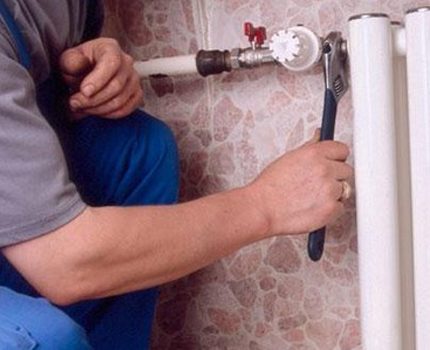
Home heating planning includes more than just boiler power calculation, the choice of radiator locations, but also the analysis of the movement of the coolant. Of course, a large living area is an opportunity for a comfortable life by no means one person. But the coolant circulation speed decreases. Therefore, a pump is installed that makes the water circulate faster.
Purpose of circulating equipment
In a closed heating system, the boiler heats the water. However coolant It circulates through the pipes of the batteries at an insignificant speed, therefore it returns to the boiler, having a low temperature. The heating device runs to the limit, which reduces its useful life.
The purpose of the circulation pump is to overcome the hydraulic resistance, to ensure the flow of water in structurally complex, long circuits. The inclusion of a pump in the circuit will help to form a uniform heating and acceptable temperature in residential premises, to allow the boiler to work at medium power.
Also, in the case of using a pump, there is no need for device slopes of the pipeline towards the boiler and it becomes possible to significantly reduce the diameter used in the assembly of pipes. The difference between the temperature of the water that enters and leaves the boiler is only a few degrees.
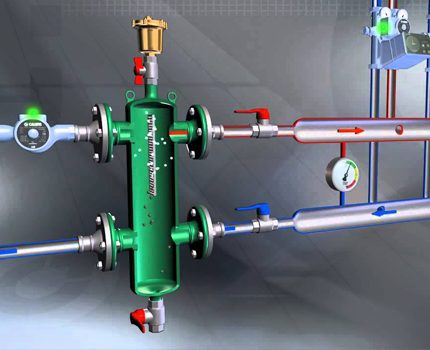
Design and types of pumps
Circulation pumps are not particularly complex design. Therefore, they are easy to repair.
The main elements of the equipment are the casing, the impeller and the electric motor. The blades rotate, resulting in centrifugal force. As a result, areas with different pressure levels are formed.
Circular pumps are divided into:
- “Wet”;
- "Dry."
The type of rotor determines the difference. The tightness of the housing is ensured by a special metal cup, which is located between the stator and the rotor.

The placement of the rotor in the medium is a guarantee of a constant decrease in its temperature and lubrication of structural elements.Also, the sounds of the pump are almost inaudible, since they are absorbed by water. Thanks to this, this type is used in private homes.
However, the efficiency of wet pumps is 50%. This is due to the lack of the ability to seal the rotor with its large diameter. Therefore, the equipment is not used when increased productivity is required, for example, with an elongated pipeline.
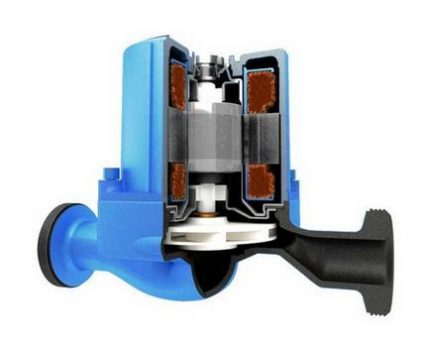
As for the “dry” rotor, its working part does not come in contact with water. The last hit is blocked by protective rings. This design is smaller. And the power is 1.5 times more - 80%.
The following types of devices with a "dry" rotor:
- Centrifugal, in which the motor is flanged. The housing is fixed on a foundation plate using a special mount.
- Large centrifugal devices with coupling and motor. If their entry and exit points are located on the same axis, then they are called straight-through.
To find the optimal circulation pump, you need to analyze many parameters. The most important of which are the area of use, performance, cost and noise.
We also recommend that you familiarize yourself with the top ten circulation pumps for heating. More details - go to the link.
Rules for the selection of circulation equipment
The “wet” look of the circulation pump is less noise. The opposite is the case with the “dry” rotor. In this case, noise is generated not only as a result of the operation of a purely pump, but also of a fan, which is responsible for lowering the temperature of the electric motor.
"Dry" devices are mounted in industrial premises, and "wet" are relevant for residential premises. After all, the noise level exceeding 70 dB will have a negative impact on the psychological state of those living in the house.
In the arrangement of private houses, the priority is the “wet” version of the circulation pump. Its blades are constantly in the pumped medium, the parts will be lubricated with water and will last 5 years or more.
When you turn on the device in an open heating circuit, you should pay close attention to the quality of the coolant, do not replenish it with water with the presence of mineral and organic inclusions.
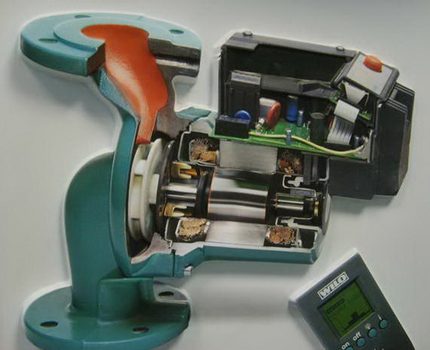
Another criterion is an indicator of pressure. So, if for optimal operation of a closed system it is within 10 meters, then a wet rotor is suitable. Enough power in 25-30 m3 in hour.
When the heating system requires more pressure, then the best option is a pump with a “dry” rotor. In its design, the rotor is separated from the heating pipe by an oil seal. This variety will consume less electricity than its “wet” counterpart with the same work efficiency.
The following formula will help you find out the required pump power:
Q = 0.86 * P / dt
Where:
Q - pump power, m3/hour;
P - thermal power of the heating system, kilowatts;
dt is the difference between the temperature of the water before it enters the heater and after exiting it.
We give a concrete example. Let the area of a residential building - 200 m2. Let's pretend that two-pipe heating system. To maintain the optimum temperature in winter, a thermal power of 20 kilowatts is sufficient.
By default, dt is 20 degrees Celsius. This indicator is enough for approximate calculations at home.
As a result, we get 0.86 m3 / hour. We can round to 0.9. It’s better to be safe from the error. And over time, the circulation pump wears out, so the power will be less.
Another parameter of the equipment is pressure.Each hydraulic system has a resistance to water flow. This characteristic determines the need to use the device to ensure circulation of the coolant in the system.
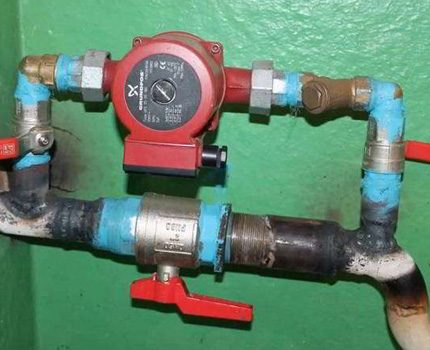
To get the exact value of the hydraulic resistance index, the calculations are carried out according to the following formula:
H = N * K
Where:
N - the number of floors of the building (basement is considered per floor);
K - average hydraulic costs per floor of a house.
K ranges from 0.7-1.1 meters of water for two-pipe heating systems. And for collector-beam its value is in the range of 1.16-1.85.
For example, a two-story house with a basement has three levels. If the calculations are performed by a layman, then you can take the maximum value from the above ranges. For a two-pipe system it is 1.1 meters. That is, K is calculated as 3 * 1.1 and we get 3.3 m of water.
In a three-story house, the total height of the heating system is 8 meters. However, according to the formula, we got only 3.3 meters of water. This value will be sufficient, since the pump is not responsible for raising water, but only for reducing the negative effects of system resistance.
The main nuances of installation
First, it is necessary to determine the site for installing the pump in the heating network. It is important that it is in this place that it is convenient to make repairs or replace the device if such a need arises.
Previously, wet pumps were mounted on a return pipe, through which already noticeably cooled water circulated. Such an approach, according to authoritative experts in the field of heating, increases the service life of oil seals, bearings and rotors.
However, the structural elements of modern pumps consist of materials that are not afraid of exposure to hot water. Therefore, it is possible to install the device both on a pipe transporting chilled water to the boiler, and on a carrier already heated.
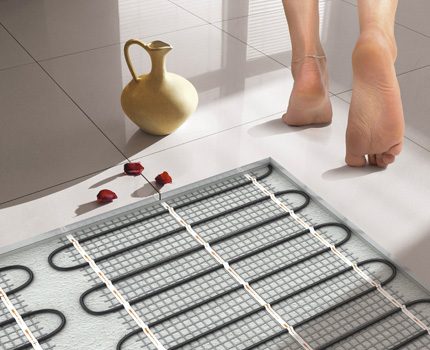
In order to normalize the pressure, the pump should be installed in the pipeline supplying water to the boiler. This zone is located near the water inlet expansion tank. As a result, it will be possible to obtain high temperature in this section of the heating system.
There are simple rules, the implementation of which will correctly install the circulation equipment:
- below and above the pipe near the pump place Ball Valves. The latter allow you to suspend the water supply, repair or replace the device;
- a filter is installed in front of the pump, which prevents dirt and other mechanical irritants from entering the device;
- the air valve is mounted on top of the bypass. It prevents the formation of air jams;
- an arrow is marked on the pump housing. It indicates how, relative to the direction of the flow of water, the pump should be placed;
- "Wet pump" is installed in a horizontal position. If the electric motor is not completely in the water, then the device will fail more quickly;
- device terminals point up;
- all connections are protected with sealant and gaskets;
- use ground outlets for security.
Following these simple recommendations will allow you to correctly place the circulation pump in the system. In the future, his work will bring its owner only comfort.
It is important to remember one feature of manual control equipment - to release air, before each pump is turned on, you must open the air valve for 5 minutes.
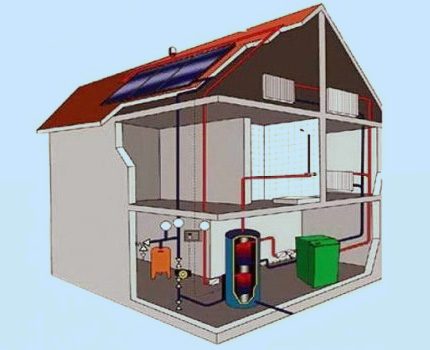
While the fuel system is not filled with water and air is not exhausted, the pump must not be turned on. Otherwise, the device may burn out. But the pump with automatic control releases air without human intervention.
The sequence for installing the circulation pump in the heating system is as follows:
- If the heating system is already in use, drain the water several times. So get rid of mechanical irritants.
- Bypass installation. Below and above the pump, special taps are mounted that hold water in the event of a pump breakdown and allow you to replace the device.
- Mount the filter.
- Install a bypass piping line.
- Mount valves to prevent free flow of water in the system.
- They put an expansion tank (relevant for an open type system).
- Install the pump in accordance with the instructions and installation rules. They are mounted horizontally, because in an upright position it will lose a third of productivity and will quickly fail.
- The joints are treated with sealant, which will positively affect the efficiency and duration of the pump.
- Fill the fuel system with water.
The optimum number of circulation pumps is determined by the length of the pipeline. For example, if the total length of the pipes is up to 80 m, then one device with an average power is enough.
Although, it is better to put one for permanent work, and install the second "in reserve". This will allow in the event of a breakdown of the main working device to immediately start the circulation of the coolant through the system.
If the pipeline is extended in the heating system to a distance of more than 80 m, 3-4 circulation devices or more will be required.
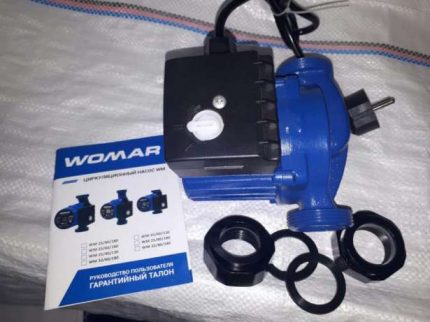
You can order a professional installation. The cost of the services of specialists determines the prevalence of the device model, the complexity of the bypass pipes and the number of pipeline contours.
Detailed instructions on installing the circulation pump in the heating system can be read here.
Advantages and disadvantages of pumps
Many consumers focus exclusively on the strengths of the circulation pump. Undoubtedly, this equipment is of great benefit to the owner of the house.
Its main advantages are as follows:
- Unpretentiousness - the device has no special requirements for the heating system. Various types of devices provide the formation of a heating circuit of the desired length.
- Optimum coolant speed. The equipment forms pressure drops and provides the best movement of the water flow.
- Performance - operational inclusion of the heating system. Batteries are filled with warm water in minutes.
- Convenience. The pumps are easy to install, maintain and replace.
- High efficiency. To ensure a comfortable temperature, a minimum of electricity is enough.
Circulation pumps not only increase the efficiency of the heating system. They are also distinguished by ease of installation and maintenance. Also, equipment, if installed correctly, will last far from one year.
But, unfortunately, it has several drawbacks. The main disadvantages of heating systems with pumps are as follows:
- Increased energy costs. The more powerful the device, the greater the amount in the account.
- The dependence of the device on electricity.
- Additional expenses. It is not possible to install a pump without acquiring related parts.
- Installation Costs. If the heating system is already running, do not do without a specialist who will connect the pump in accordance with the technical requirements.
To reduce dependence on electrical energy, you can purchase a diesel generator specifically designed for a specific pumping group.
Or mount the device with a slope so that the system works for a short period on the basis of natural circulation.
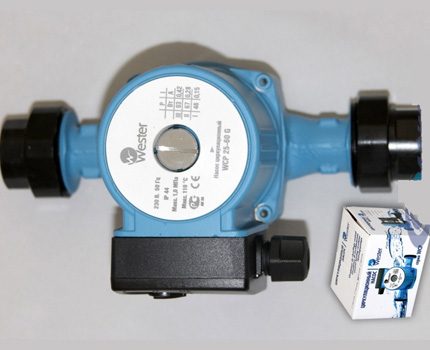
Advantages of the circulation pump look more significant than its disadvantages. As a result of using the device, the efficiency of the fuel system is significantly increased. Most of the drawbacks of the unit relate to additional one-time or regular expenses.
Conclusions and useful video on the topic
About the device and the rules for installing the pump in the video clip:
Features of installing circulating equipment in the heating system are shown in the video:
Having familiarized yourself with the principle of operation of the circulation equipment, with the main differences between the wet and dry type, you can choose the most suitable option for your heating system. If desired, you can install the pump on your own. To do this, you should adhere to the rules and useful recommendations for the installation of circulation equipment.
Do you have personal experience installing such equipment? Please share it with our readers. Tell us about the nuances of installation that are known to you. Leave your comments, ask questions, share your experience in the comments section.

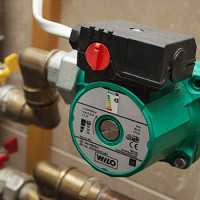 Selection of a circulation pump: device, types and rules for choosing a pump for heating
Selection of a circulation pump: device, types and rules for choosing a pump for heating 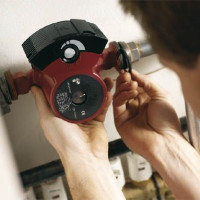 Installing a pump for heating: how to properly install pumping equipment
Installing a pump for heating: how to properly install pumping equipment 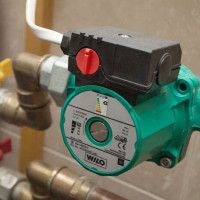 Connection diagrams of the heating pump: installation options and step-by-step instruction
Connection diagrams of the heating pump: installation options and step-by-step instruction 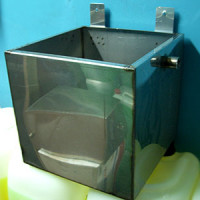 Expansion tank for open heating: device, purpose, main types + tips for calculating the tank
Expansion tank for open heating: device, purpose, main types + tips for calculating the tank 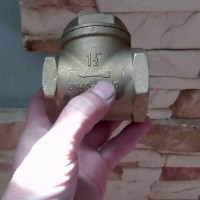 Check valve for heating: action, types, pros and cons + installation diagram
Check valve for heating: action, types, pros and cons + installation diagram 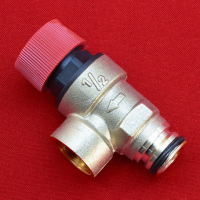 Safety valve in the heating system: types, purpose, diagrams and installation
Safety valve in the heating system: types, purpose, diagrams and installation  How much does it cost to connect gas to a private house: the price of organizing gas supply
How much does it cost to connect gas to a private house: the price of organizing gas supply  The best washing machines with dryer: model rating and customer tips
The best washing machines with dryer: model rating and customer tips  What is the color temperature of light and the nuances of choosing the temperature of the lamps to suit your needs
What is the color temperature of light and the nuances of choosing the temperature of the lamps to suit your needs  Replacement of a geyser in an apartment: replacement paperwork + basic norms and requirements
Replacement of a geyser in an apartment: replacement paperwork + basic norms and requirements